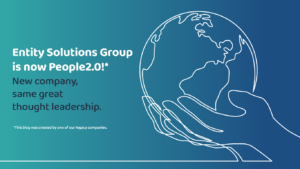We are currently living through a time of unprecedented change. The past year has presented a multitude of challenges and obstacles that have not been easy to overcome, from offices and schools being shut to remote work becoming the default overnight. However, many businesses have remained resilient, determined to meet these obstacles head-on to come up with solutions that would allow their organisations to remain profitable.
The word “resilience” has become one of the buzz words of the pandemic, as people dig deep to live and work through such extraordinary times. We asked James Atkins of Vantage Strategy what resilience is and how we can cultivate it in our work culture during difficult times.
Here are the highlights of James’ session, or you can watch the full recording below.
How to grow organisational resilience in your business
Resilient organisations are well-prepared for change. Regardless of the type or magnitude of the transformation a business is facing, the goal is not to simply navigate today’s needed changes but also to create an organisational resilience model poised for more change in the future.
This organisational resilience model is structured around macro-PESTLE (Political, Economic, Social, Technological, Legal, Environmental)

In this context, organisational resilience can be increased in four areas.
- Stakeholder resilience is built via a clear vision for the business, credible management and active engagement and alignment with equity, financial and other partners.
- Operational resilience involves managing operational risks (e.g. key suppliers, input prices, disruptive innovations) and allowing flexibility in the cost budget to respond rapidly to change.
- Capital resilience means securing sources of funding that are flexible and long-term, having debt covenants that are achievable based on capital efficiencies and cash balances.
- Market resilience refers to the ability to navigate revenue risks induced by customers, competition, trading data and disruptive technologies.
The VACINE model helps identify the resources that an organisation needs to cope in a VUCA (Volatile, Uncertain, Complex, Ambiguous) world.
Velocity: ability to move quickly
Agility: ability to understand insights and ideas brought about by the external world and quickly develop a vision to reflect those
Creativity: ability to combine different things in new and novel ways
Innovation: ability to think beyond the business and the sector
Network: ability to cultivate ecosystems
Experimentation: ability to adapt, experiment and learn

Source: Nexxworks
Lessons in personal resilience
Is your mask “fitted properly”? It’s important to develop your personal resilience to be able to support your family, friends, and coworkers. Your personal resilience involves behaviors, thoughts, and actions that promote personal wellbeing and mental health. People can develop the ability to withstand, adapt to, and recover from stress and adversity—and maintain or return to a state of mental wellbeing—by using effective coping strategies.
Personal resilience can be exercised in four ways:
- Thoughts: shift your thoughts from “I can’t/I won’t/I never” to “I can do it.”
- Beliefs: improve your weaknesses and reinforce your strengths, and seek opportunities for personal growth
- Problem solving skills: employ effective techniques to tackle new challenges
- Managing strong feelings: know when to step back and avoid burnouts
Five strategies to combat change fatigue include being aware of your energy, delegating when possible, reviewing your progress, taking time to recharge, and swapping roles with others.
Respond to technological disruptions
There are several factors that accelerate digital transformation for organisations, including COVID-19, Artificial Intelligence, Robotics, Cloud, Internet of Things, Big Data, Augmented and Virtual Reality, Blockchain and the sharing economy. Businesses ought to determine what mixture of technologies will be most productive in terms of improving operational strategies and creating new products and services.
SMEs face three main barriers when going digital – the assumption that digital transformations are costly, lack of necessary skills and experience and not knowing where to start. These can be overcome by eliminating internal and external efficiencies, utilising talents within the company and employing third-party service providers.
A final note
A valuable lesson that we can learn from the big tech companies such as Google, Apple, Amazon and Facebook is how to change our business model from a Pipeline to a Platform. In the case of traditional recruitment agencies, organisations often try to control their candidates, optimise their processes and pipelines and focus on making these their competitive edge. Moving forward, it is recommended that organisations start to think about collaborating and contributing to the larger ecosystems to increase the total value of the system. In other words, ecosystems, instead of products, should triumph.
Watch James Atkins of Vantage Strategy address other hot topics:
Driving business growth through market innovation
Leading teams in times of change



